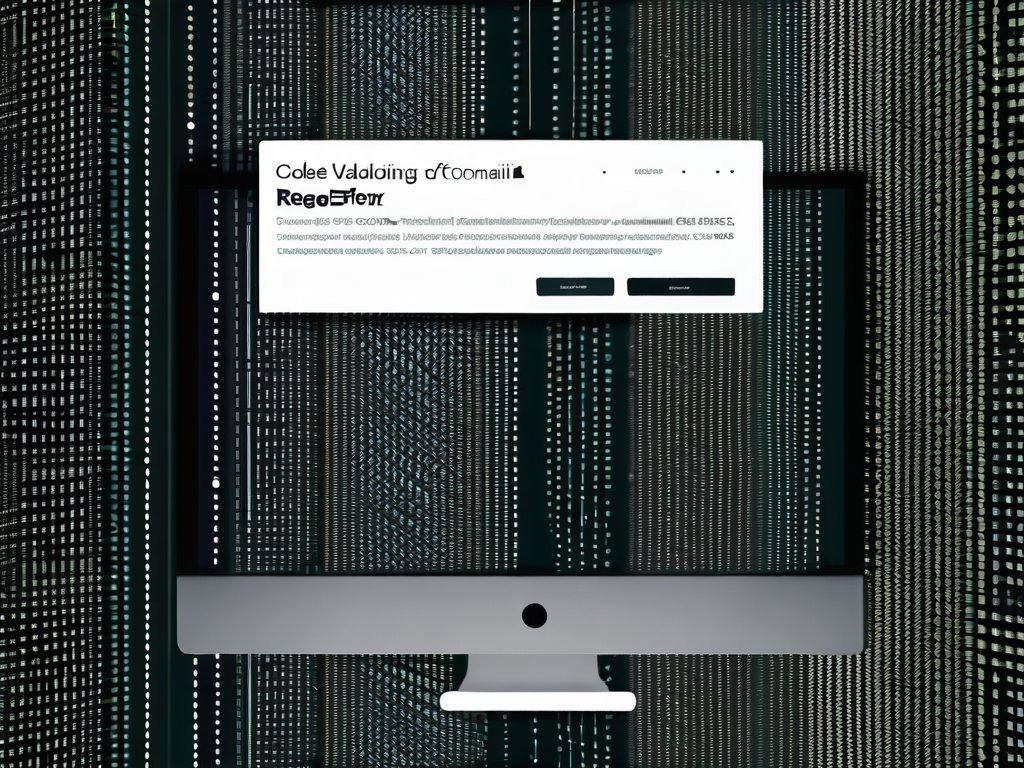Table of Contents
In today’s digital age, email addresses have become an essential part of our communication infrastructure. Whether it’s for personal or professional use, having a valid email address is crucial. But have you ever wondered how these email addresses are validated? Enter regular expressions, commonly known as regex. In this comprehensive guide, we will explore the world of regex for email addresses and equip you with the knowledge to implement it effectively.
Understanding the Basics of Regex
Before we delve into the intricacies of regex for email addresses, let’s first understand what regex is and why it is important in data validation.
Regular expressions, often abbreviated as regex, are a powerful tool used to search, match, and manipulate text based on specific patterns. They provide a flexible and efficient way to validate and extract information from textual data. In the context of email addresses, regex allows us to verify whether an address conforms to the expected format.
Regular expressions consist of a sequence of characters that define a search pattern. These patterns can include literal characters, metacharacters, and quantifiers, allowing for complex and precise matching criteria. For example, in email validation, a regex pattern may include rules for the presence of an “@” symbol, followed by a domain name and a top-level domain.
What is Regex?
Regular expressions, often abbreviated as regex, are a powerful tool used to search, match, and manipulate text based on specific patterns. They provide a flexible and efficient way to validate and extract information from textual data. In the context of email addresses, regex allows us to verify whether an address conforms to the expected format.
Regex patterns can be as simple as matching a single character or as complex as validating an entire email address. Understanding the syntax and functionality of regex is essential for developers and data analysts working with textual data. Mastery of regex empowers individuals to perform advanced text processing tasks with precision and speed.
Importance of Regex in Data Validation
Data validation is a crucial aspect of any software application or system that deals with user input. Regex plays a vital role in enforcing data integrity and ensuring that email addresses provided by users are syntactically correct. By employing regex patterns, we can quickly identify and reject invalid email addresses, preventing potential issues downstream.
Furthermore, regex can be utilized in a variety of applications beyond email validation. From validating phone numbers to extracting specific information from a large dataset, regex offers a versatile solution for pattern matching and data manipulation. Its widespread use in programming languages, text editors, and command-line tools underscores its importance in modern computing environments.
The Anatomy of an Email Address
Before we dive deeper into regex patterns for email validation, let’s break down the components that make up an email address. Understanding the structure of an email address is crucial for ensuring proper validation and handling of email inputs in web applications.
Local Part of an Email Address
The local part of an email address is the portion that appears before the “@” symbol. It typically consists of alphanumeric characters, along with certain special characters such as dots (.), underscores (_), and hyphens (-). This section is unique to the mailbox on the email server. The local part can also include comments enclosed in parentheses, though these are not commonly used in practice.
When a user creates an email address, the local part serves as a unique identifier for their mailbox. It is essential for routing messages to the correct recipient within the email server. Some email providers may impose restrictions on the length or allowed characters in the local part, so it’s important to consider these limitations when designing email validation logic.
Domain Part of an Email Address
The domain part of an email address follows the “@” symbol and represents the domain name of the email server. It consists of the domain name and the top-level domain (TLD), such as .com, .net, or .org. The domain part provides the context for the email address, indicating which server handles the incoming messages.
Domains are hierarchical, with the top-level domain at the highest level. The domain name itself can be further divided into subdomains, each separated by a period. For example, in the email address “user@example.com,” “example” is the second-level domain, and “com” is the top-level domain. Understanding the domain part is essential for validating email addresses and ensuring they are sent to the correct destination server for delivery.
Regex Patterns for Email Validation
Now that we have a good understanding of the email address structure, let’s explore some common regex patterns used for email validation.
Validating email addresses using regular expressions is a crucial aspect of form validation in web development. Regular expressions, or regex, provide a powerful tool for pattern matching and can help ensure that the email addresses entered by users meet certain criteria.
Basic Regex Pattern for Email
One of the simplest regex patterns for email validation follows this structure: [example@example.com]. This pattern ensures that an email address contains a local part, followed by the “@” symbol, and ends with a domain part.
While this basic regex pattern provides a good starting point for email validation, it may not cover all possible variations and edge cases that can occur in email addresses.
Advanced Regex Pattern for Email
For more robust validation, we can utilize a more comprehensive regex pattern. This pattern takes into account additional constraints such as the length of the local and domain parts, the presence of a Top-Level Domain (TLD), and the allowed special characters. By implementing this advanced pattern, we can further improve the accuracy of email validation.
Advanced regex patterns for email validation are often more complex but offer greater precision in identifying valid email addresses. These patterns can help prevent common mistakes such as missing “@” symbols, invalid characters, or incomplete domain names.
Implementing Regex for Email Validation
Now that we have explored different regex patterns, let’s see how we can implement them in popular programming languages.
Regex in Python for Email Validation
Python provides a built-in library called “re” that offers extensive regex support. By utilizing the functions and methods provided by this library, we can easily validate email addresses in Python applications.
Regex in JavaScript for Email Validation
JavaScript also provides native support for regex through its built-in “RegExp” object. With the help of the Regex object, we can validate email addresses in web applications and ensure that users enter correct and properly formatted email addresses.
Common Mistakes in Regex Email Validation
While regex is a powerful tool, it is essential to be aware of the common mistakes that developers often make when implementing email validation.
Overlooking Case Sensitivity
One common mistake is forgetting to account for case sensitivity in regex patterns. An email address, including the local and domain parts, is generally case insensitive. To avoid rejecting valid email addresses due to case mismatches, it is crucial to use case-insensitive matching in our regex patterns.
Ignoring Special Characters
Another mistake is overlooking the inclusion of special characters in regex patterns. As mentioned earlier, email addresses can contain special characters like dots, underscores, and hyphens. Failing to account for these characters can lead to false validation or rejecting valid email addresses.
In conclusion, regex is a powerful tool in the realm of email address validation. By understanding the basics of regex, the anatomy of an email address, and employing appropriate regex patterns, we can effectively validate email addresses in various programming languages. It is important to be aware of common mistakes and consider all the aspects that make an email address valid. Armed with this knowledge, you can ensure the accuracy and integrity of email addresses in your applications.











